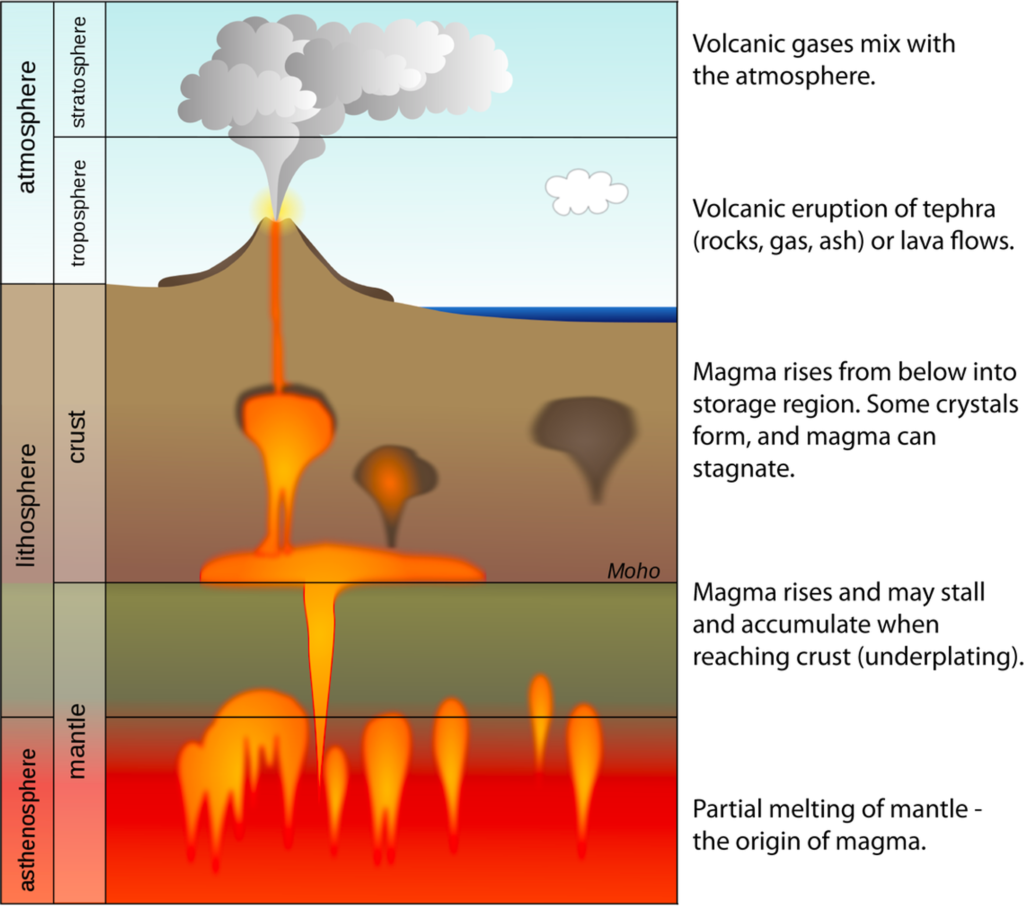Magmatic eruptions are caused by the decompression of gas within magma, which propels it forward. There are several factors that contribute to magmatic eruptions, including[1][2]:
- Magma movement: As magma rises towards the surface, it moves through the crust and experiences changes in pressure and temperature. This can cause the magma to decompress, leading to the release of trapped gases.
- Gas buildup: As magma moves closer to the surface, more and more water exsolves from the magma, increasing the gas/magma ratio in the conduit. When the volume of bubbles reaches about 75%, the magma disintegrates to pyroclasts and erupts explosively.
- Injection of new magma: The injection of new magma into a chamber that is already filled with magma can trigger an eruption. This can either displace the existing magma, leading to a buildup of pressure, or cause the magma to overflow, resulting in an eruption[3].
- Tectonic activity: Magmatic eruptions are often associated with plate tectonic activity. For example, volcanoes in Japan, Iceland, and Indonesia occur on the margins of the massive solid rocky plates that make up Earth’s crust. When one plate slides under another, water trapped in the subducted, sinking plate is squeezed out, producing enough heat to melt nearby rock, forming magma[4].

These factors, along with others, contribute to magmatic eruptions, which can vary in intensity and type, such as explosive eruptions and effusive eruptions[5].

